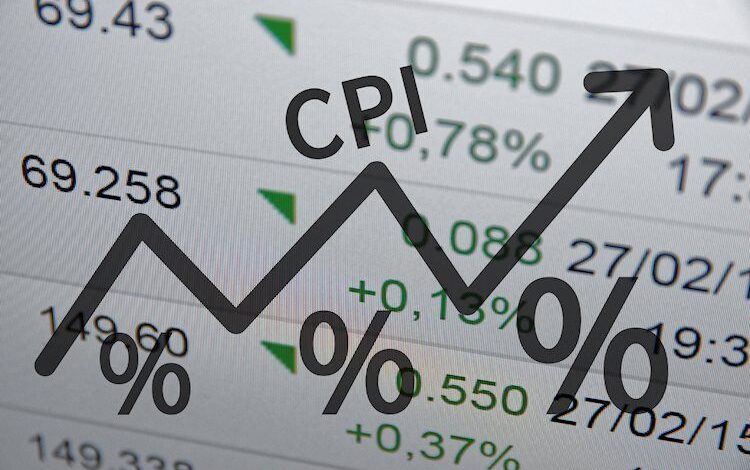What Just Happened: What is CPI inflation, and why does it matter?

What just happened?
US Consumer Price Index (CPI) inflation vexed markets in September, with headline CPI inflation falling less than expected on an annualized basis and core CPI inflation ticking upwards over the same period. Investors have been broadly hoping for US inflation figures to continue grinding down toward the Federal Reserve’s (Fed) 2% annual inflation target, but September’s CPI inflation print vexed markets, kicking the legs out from beneath broad-market risk appetite.
Why does CPI inflation matter?
CPI inflation is a measure of the month-on-month change in consumer-level prices for a mixed basket of consumer goods that represents a significant cross-section of the overall consumption economy. While the CPI index lacks consumer price information for rural residents, measuring only the cost changes in urban goods, the CPI index as a broader measure of consumer inflation captures roughly 93% of the US population.
Since controlling inflation via interest rates is a full half of the Fed’s mandate (with the other half being stable employment, a feature unique to the Federal Reserve not shared by other central banks), CPI inflation is used by markets as a key method of estimating when the Fed will make changes to the Fed funds rate, and by how much. With inflation continuing to run above the Fed’s target levels, upticks in key inflation metrics makes it harder for the Fed to deliver rate cuts as fast or as furiously as investors would like to see.
What happens next?
With CPI inflation registering hotter than expected in September, investors will be turning to the rest of the economic data docket for signs of weakness that might spur the Fed back into a faster pace of rate cuts heading into the end of the year. Labor market weakness has been earmarked as a likely ignition point for further higher-than-expected rate reductions. However, too far into the red on jobs data or other inflation metrics (like the Personal Consumption Expenditure Price Index) could also spark fear of a widespread recession in the US economy, leaving investors in a challenging ‘Goldilocks’ position: markets are hoping for soft spots in the US economy to force the Fed to reduce interest rates, but a direct tip-over into recession will render rate cuts a moot point.
Economic Indicator
Consumer Price Index ex Food & Energy (YoY)
Inflationary or deflationary tendencies are measured by periodically summing the prices of a basket of representative goods and services and presenting the data as the Consumer Price Index (CPI). CPI data is compiled on a monthly basis and released by the US Department of Labor Statistics. The YoY reading compares the prices of goods in the reference month to the same month a year earlier. The CPI Ex Food & Energy excludes the so-called more volatile food and energy components to give a more accurate measurement of price pressures. Generally speaking, a high reading is bullish for the US Dollar (USD), while a low reading is seen as bearish.
The US Federal Reserve has a dual mandate of maintaining price stability and maximum employment. According to such mandate, inflation should be at around 2% YoY and has become the weakest pillar of the central bank’s directive ever since the world suffered a pandemic, which extends to these days. Price pressures keep rising amid supply-chain issues and bottlenecks, with the Consumer Price Index (CPI) hanging at multi-decade highs. The Fed has already taken measures to tame inflation and is expected to maintain an aggressive stance in the foreseeable future.
Fed FAQs
Monetary policy in the US is shaped by the Federal Reserve (Fed). The Fed has two mandates: to achieve price stability and foster full employment. Its primary tool to achieve these goals is by adjusting interest rates. When prices are rising too quickly and inflation is above the Fed’s 2% target, it raises interest rates, increasing borrowing costs throughout the economy. This results in a stronger US Dollar (USD) as it makes the US a more attractive place for international investors to park their money. When inflation falls below 2% or the Unemployment Rate is too high, the Fed may lower interest rates to encourage borrowing, which weighs on the Greenback.
The Federal Reserve (Fed) holds eight policy meetings a year, where the Federal Open Market Committee (FOMC) assesses economic conditions and makes monetary policy decisions. The FOMC is attended by twelve Fed officials – the seven members of the Board of Governors, the president of the Federal Reserve Bank of New York, and four of the remaining eleven regional Reserve Bank presidents, who serve one-year terms on a rotating basis.
In extreme situations, the Federal Reserve may resort to a policy named Quantitative Easing (QE). QE is the process by which the Fed substantially increases the flow of credit in a stuck financial system. It is a non-standard policy measure used during crises or when inflation is extremely low. It was the Fed’s weapon of choice during the Great Financial Crisis in 2008. It involves the Fed printing more Dollars and using them to buy high grade bonds from financial institutions. QE usually weakens the US Dollar.
Quantitative tightening (QT) is the reverse process of QE, whereby the Federal Reserve stops buying bonds from financial institutions and does not reinvest the principal from the bonds it holds maturing, to purchase new bonds. It is usually positive for the value of the US Dollar.
Information on these pages contains forward-looking statements that involve risks and uncertainties. Markets and instruments profiled on this page are for informational purposes only and should not in any way come across as a recommendation to buy or sell in these assets. You should do your own thorough research before making any investment decisions. FXStreet does not in any way guarantee that this information is free from mistakes, errors, or material misstatements. It also does not guarantee that this information is of a timely nature. Investing in Open Markets involves a great deal of risk, including the loss of all or a portion of your investment, as well as emotional distress. All risks, losses and costs associated with investing, including total loss of principal, are your responsibility. The views and opinions expressed in this article are those of the authors and do not necessarily reflect the official policy or position of FXStreet nor its advertisers. The author will not be held responsible for information that is found at the end of links posted on this page.
If not otherwise explicitly mentioned in the body of the article, at the time of writing, the author has no position in any stock mentioned in this article and no business relationship with any company mentioned. The author has not received compensation for writing this article, other than from FXStreet.
FXStreet and the author do not provide personalized recommendations. The author makes no representations as to the accuracy, completeness, or suitability of this information. FXStreet and the author will not be liable for any errors, omissions or any losses, injuries or damages arising from this information and its display or use. Errors and omissions excepted.
The author and FXStreet are not registered investment advisors and nothing in this article is intended to be investment advice.


